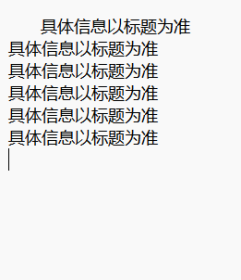
(发货快)第二语言习得导论 沈昌洪,刘喜文,季忠民 编著 北京大
二手会有少量涂画,整体不影响再次阅读使用!套装不一定齐全,请下单前咨询在线客服!
¥ 4.12 1.4折 ¥ 29 八五品
库存33件
作者沈昌洪,刘喜文,季忠民 编著
出版社北京大学出版社
ISBN9787301171356
出版时间2010-06
版次1
装帧平装
开本16开
纸张胶版纸
页数229页
字数99999千字
定价29元
货号9787301171356
上书时间2024-09-01
- 在售商品 暂无
- 平均发货时间 10小时
- 好评率 暂无
- 最新上架
商品详情
- 品相描述:八五品
- 商品描述
-
基本信息
书名:第二语言习得导论
定价:29.00元
作者:沈昌洪,刘喜文,季忠民 编著
出版社:北京大学出版社
出版日期:2010-06-01
ISBN:9787301171356
字数:246000
页码:229
版次:
装帧:平装
开本:16开
商品重量:
编辑推荐
《第二语言习得导论(英文版)》:浙江省“十一五”重点教材建设项目
内容提要
本教材以章节的形式论述国外“第二语言习得”领域近半个世纪以来的研究历程。全书既全面、详细地介绍语言习得的理论创建与发展、儿童母语习得过程、二语/外语学习理论以及二语课堂教学研究等方面的成果,又综合、客观地反映认知学、心理学、社会文化学等领域对第二语言习得与发展的不同视角与观点。 本教材适合高等院校英语专业本科生、研究生以及中小学英语教师学习和使用。
目录
Chapter 1 Introduction: Key Concepts and Issues in SLA 1.1 Language Acquisition and SLA 1.2 Some Definitions of SLA 1.3 Some Structural Characteristics of SLA 1.4 The Literature on the Theories of SLA 1.5 A Theoretical Approach Proposed by Spolsky 1.6 Theoretical Applications to L2 Teaching and Learning 1.7 Some Distinctions in the field of SLA Research 1.8 Conclusion Points for Thinking Further Reading Chapter 2 Views on Language, Learning and Learner 2.1 Views on the Nature of Language 2.2 Views of the Language Learning Process -- L1 versus L2 2.3 Views of the Second Language Learner 2.4 Conclusion Points for Thinking Further Reading Chapter 3 An Introduction to Language Acquisition 3.1 Introduction 3.2 Developmental Patterns in L1 Acquisition 3.3 The Controversy between Behaviorist and Mentalist Models 3.4 Developmental Patterns in L2 Acquisition 3.5 Conclusion Points for Thinking Further Reading Chapter 4 Recent History of SLA Research 4.1 Introduction 4.2 The Early Studies on Language Acquisition (to 1960s) 4.3 The Following-up Studies in 1970s and 1980s 4.4 The Recent Studies on L2A (beyond 1990s) 4.5 Conclusion Points for Thinking Further Reading Chapter 5 The UG Approach to Language Acquisition 5.1 Introduction 5.2 Universal Grammar (UG) for Language Acquisition 5.3 Arguments from First Language Acquisition 5.4 What Does UG Consist of?. 5.5 Evaluation of UG-based Approaches to SLA 5.6 Conclusion Points for Thinking Further Reading Chapter 6 Cognitive Approaches to SLA 6.1 Introduction 6.2 Two Main Groups of Cognitive Theorists 6.3 Processing Approaches 6.4 Connectionism 6.5 Theories of L2 Processing 6.6 Evaluation of Cognitive Approaches to L2 Learning 6.7 Conclusion Points for Thinking Further Reading Chapter 7 Some Other Perspectives on SLA 7.1 Introduction 7.2 Functional Perspectives on L1 Learning and SLA 7.3 Functionalist Contributions to an Understanding of SLA 7.4 Sociocultural Perspectives on SLA 7.5 Sociolinguistic Perspectives on SLA 7.6 Conclusion Points for Thinking Further Reading Chapter 8 Input, Interaction and Output in SLA 8.1 Introduction 8.2 Input and Interaction in L1 Acquisition 8.3 Input and Interaction in SLA 8.4 Output in SLA 8.5 Theorizing Input, Interaction and Output Research 8.6 Feedback, Recasts and Evidence in SLA 8.7 Evaluation: The Scope of Interactionist Research 8.8 Conclusion Points for Thinking Further Reading Chapter 9 Varied Perspectives on lnterlanguage 9.1 An Introduction to Interlanguage 9.2 Social Aspects of IL 9.3 Discourse Aspects of IL 9.4 Psycholinguistic Aspects of IL 9.5 Conclusion Points for Thinking Further Reading Chapter 10 Researches on L2 Classroom Practice(I) 10.1 Introduction 10.2 An Introduction to the History of L2 Teaching Methods 10.3 Cross-language Competition between L1 and L2 10.4 Some Methods Used in L2 Classroom Research 10.5 Data Collection and Data Analysis 10.6 Conclusion Points for Thinking Further Reading Chapter 11 Researches on L2 Classroom Practice(II) 11.1 Direct Involvement of Classroom Interaction Research 11.2 An Introduction to Classroom Interaction 11.3 Types of Language Use in Classroom Interaction 11.4 Turn Taking in Classroom Discourse 11.5 Differences between Classroom and Naturalistic Discourse 11.6 The Teacher's Role in Classroom Interaction 11.7 Learner Participation 11.8 Classroom Interaction in the L2 Learning 11.9 The Relationship between Classroom Interaction and SLA 11.10 Conclusion Points for Thinking Further Reading Chapter 12 Conclusion 12.1 A Brief Review of the Book 12.2 An Integrated View of SLA Research 12.3 Main Achievements of Recent SLA Research 12.4 SLA Research and Language Education 12.5 Future Directions for SLA Research Points for Thinking Further Reading REFERENCES
作者介绍
序言
-

【封面】
— 没有更多了 —



以下为对购买帮助不大的评价